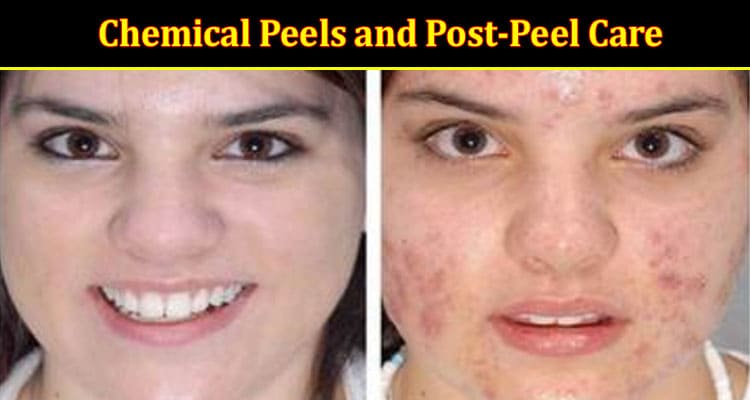Chemical peels are a standard skin treatment option for various concerns, from mild skin imperfections to more severe cases of pigmentation and scarring. This technique involves the application of a chemical solution to the skin, which eventually causes it to peel off, revealing a new, smoother layer beneath. Although chemical peels like VI Peel Precision Plus can be effective for various skin issues, it’s essential to note that they aren’t a guaranteed solution for everyone.
Understanding How Skin Ages
Aging is a multifaceted process that has both intrinsic and extrinsic factors. Intrinsic aging is governed by genetics and occurs naturally over time. As people age, the metabolic processes within skin cells slow down, and the production of key proteins like collagen and elastin diminishes. This decrease affects the skin’s ability to retain moisture, leading to dryness, fine lines, and loss of elasticity. On the other hand, extrinsic factors include external elements like sun exposure, pollution, smoking, and poor diet. These factors can contribute to oxidative stress, accelerating the aging process and increasing the appearance of wrinkles, pigmentation, and a rough skin texture.
What Are Chemical Peels?
Chemical peels are a dermatological procedure that focuses on improving the texture and appearance of the skin by using chemical solutions to eliminate its outermost layers. This process creates controlled wounds on the skin, prompting it to heal itself by developing new cells. Various substances, from naturally occurring acids like lactic and glycolic acid to synthetic compounds like trichloroacetic acid (TCA), are used based on the desired depth and effect of the peel.
The Broad Applications of Chemical Peels
One of the most appealing aspects of chemical peels is their versatility. They can address many skin issues, from superficial concerns like dullness and minor pigment irregularities to more pressing issues like acne scars and significant photodamage. Some peels are designed to target pores and reduce their appearance, while others focus on brightening the skin tone. It’s not just about the face either; chemical peels can be applied to other areas suffering from signs of aging or sun damage, like the décolletage, hands, and even legs in some cases.
Preparing for Your Chemical Peel
Before a chemical peel, a thorough consultation with a qualified dermatologist or skincare specialist is essential. During this session, they evaluate your skin type, history, and specific concerns. You may be advised to pre-condition your skin with specific products to maximize treatment benefits and reduce potential risks. For example, you might be instructed to discontinue using retinol-based products or apply a particular moisturizer that prepares your skin for peeling.
What to Expect During the Treatment
The procedure begins with your skin being meticulously cleansed to remove makeup, oil, and other impurities. Once the skin is prepared, the chemical solution is carefully applied. During this stage, you may feel sensations ranging from tingling to mild burning, depending on the strength and type of the peel. The practitioner will monitor your skin’s response and time the application accordingly. After a predetermined period, the peel is neutralized to halt its action. A soothing mask or serum may sometimes mitigate immediate post-procedure irritation.
Understanding the Different Types of Chemical Peels
Chemical peels are usually categorized into three main types:
- Superficial Peels generally use mild acids like alpha-hydroxy acids (AHAs). Superficial peels are best for those looking to refresh their skin or treat minor discolorations. They are also commonly used for maintenance after a more intense treatment.
- Medium Peels: These employ stronger solutions, often based on trichloroacetic acid (TCA), to penetrate the outer and middle layers of the skin. They are suitable for addressing moderate sun damage, deeper lines, and mild scarring.
- Deep Peels: Utilizing potent chemicals like phenol, deep peels reach the deeper skin layers and are reserved for severe skin issues. They usually require anesthesia and longer recovery times but offer transformative results.
The Post-Peel Recovery Phase
Once the peel has concluded, your skin will enter a recovery period. Superficial peels often result in minimal downtime, with some redness and flaking for a few days. Medium and deep peels, however, can lead to more intense redness, peeling, and even temporary darkening before revealing the improved skin underneath. During this period, it’s vital to follow the post-treatment guidelines provided by your healthcare provider, which may include using specific moisturizers, avoiding sun exposure, and abstaining from activities that could irritate the skin.
The Importance of Post-Peel Care
Dedicated care in the days and weeks following your peel is crucial for achieving the desired outcome. It might include using specially formulated skincare products to enhance healing and reduce irritation. It is crucial to diligently apply a high-SPF sunscreen as your skin becomes more sensitive to UV rays. Moreover, hydration internally, by drinking plenty of fluids, and externally, by using hydrating topical products, will aid quicker and more effective recovery.
Risks and Considerations
Like any medical procedure, chemical peels are not without potential risks, ranging from minor irritations to more severe outcomes like scarring or infections. If you have a darker skin tone, it’s essential to understand that you may be at risk for post-inflammatory hyperpigmentation. Additionally, if you’re pregnant or taking certain medications, you must consult your healthcare provider before considering a chemical peel. Don’t take any chances with your health – ensure you have all the necessary information before deciding.
Conclusion
Chemical peels like VI Peel Precision Plus offer a robust array of options for improving skin texture and treating various skin concerns. But they should not be undertaken lightly. Preparation, professional guidance, and dedicated post-care are essential for achieving optimal results and minimizing risks. Each individual’s experience will vary based on skin type, the issues being addressed, and the depth of the peel. Therefore, thorough consultation and personalized treatment planning are indispensable in improving skin health.

